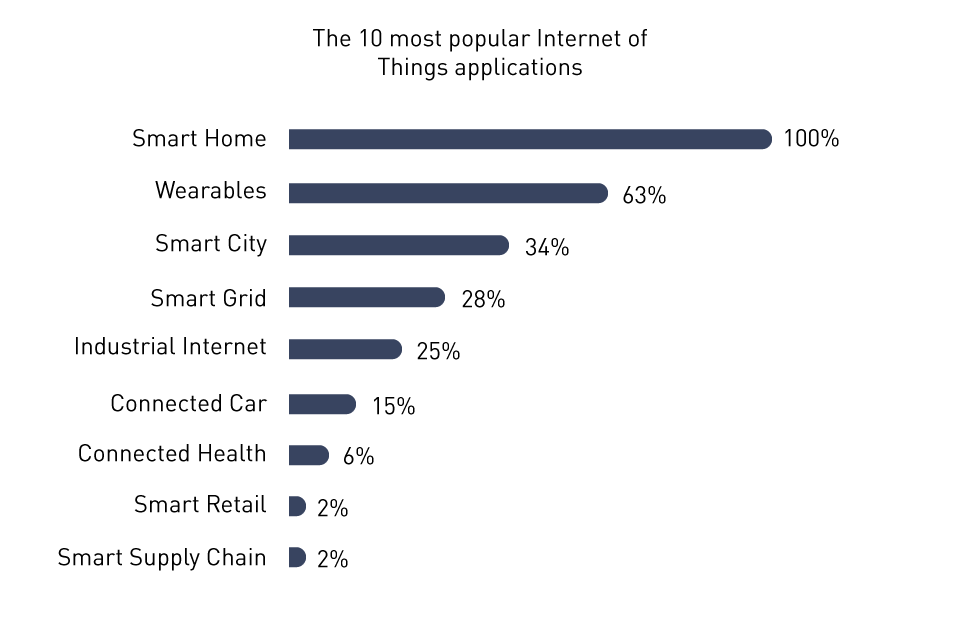Smart Home: The realm of IoT introduces smart devices like thermostats, lights, and locks, amplifying home automation and management. Users possess the ability to govern these devices remotely via smartphones or vocal commands.
Wearables: Gadgets like smartwatches and fitness trackers amass data concerning personal well-being and physical fitness. They have the capacity to track heart rates, steps, sleep cycles, and additional metrics.
Industrial IoT (IIoT): Within industrial sectors, IoT devices oversee and accumulate data pertaining to diverse parameters like temperature, pressure, and vibrations. This data can be harnessed for prognostic maintenance, facilitating preemptive servicing of machinery prior to breakdowns.
Smart Cities: IoT implementations within urban environments encompass intelligent traffic lights attuned to traffic conditions, astute waste bins that signal when they require emptying, and sensors that conduct real-time monitoring of air and water quality.

Agriculture: Within the realm of agriculture, IoT devices offer the capability to oversee soil moisture levels, crop development, and livestock behavior, thereby optimizing yields and enhancing farm administration.
Healthcare: The healthcare domain leverages IoT for remote patient monitoring, ensuring the smooth flow of medicine supply chains, and even integrating advanced equipment into surgical procedures.
Retail: In the retail sector, IoT finds application in supply chain oversight, implementation of intelligent mirrors in fitting rooms, and tailoring personalized advertising experiences.
Analog-to-Digital Converters (ADCs) play a pivotal role in numerous IoT applications, aiding in the conversion of analog signals which are typically produced by sensors, into digital formats. These digital signals can then be processed and analyzed by digital systems, enabling IoT devices to comprehend and engage with the physical world. In the ensuing sections, we will delve deeper into the significance and prerequisites of ADCs in the context of IoT.
See more information: – network.sciencefather.com
Nomination : Nominate Now
Contact us : network@sciencefather.com














.png)

